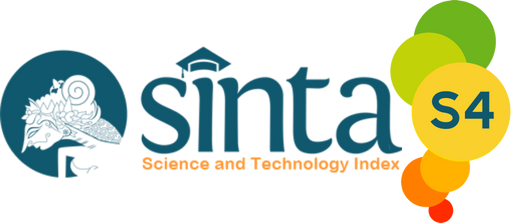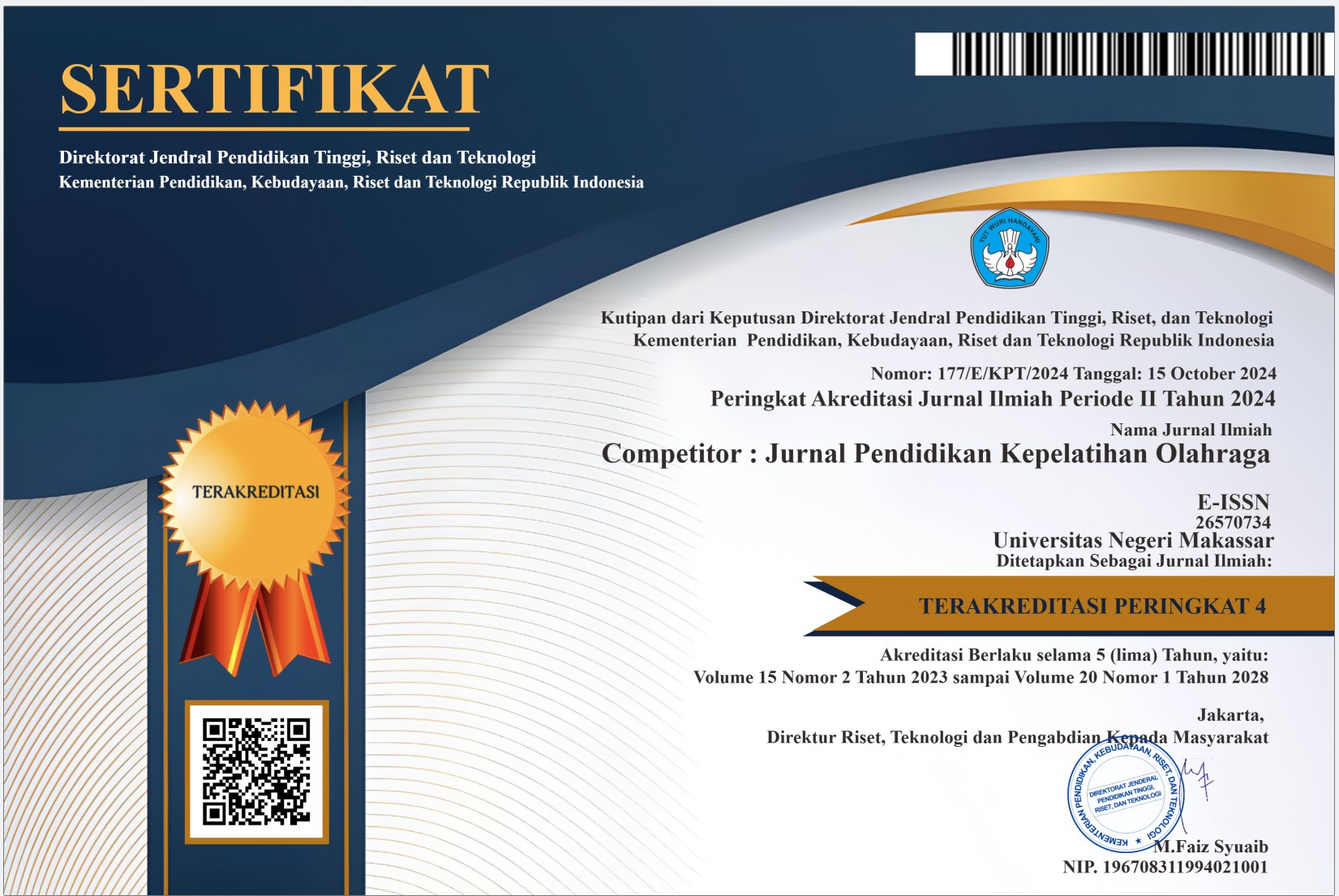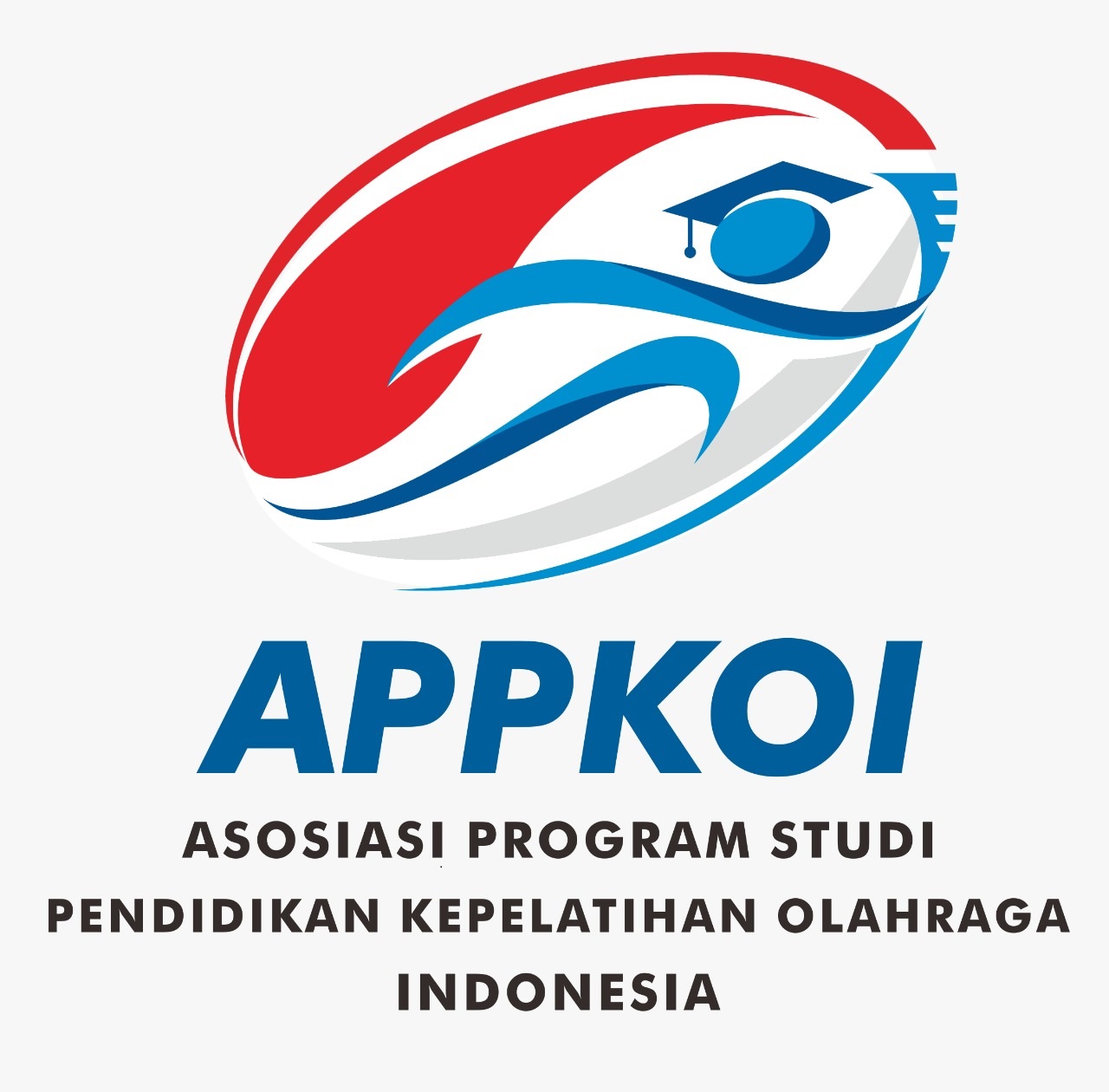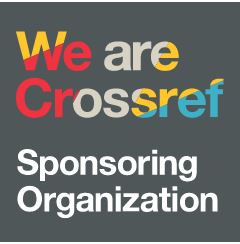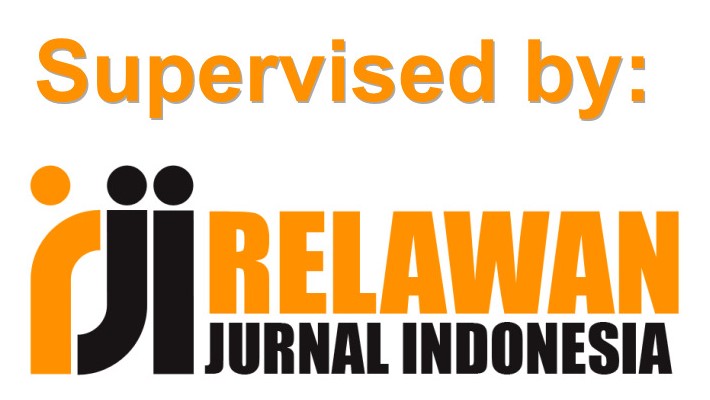The Effect of The Student Teams Achievement Division (STAD) Learning Model On The Learning Outcomes of Forward Roll In Floor Gymnastics Learning For Female Students of Grade XII SMAN 2 Sumedang In The 2023 Academic Year
DOI:
https://doi.org/10.26858/cjpko.v17i2.245Kata Kunci:
Learning Models; STAD; Learning Outcomes; Front Roll; Floor ExerciseAbstrak
Floor gymnastics is a part of the gymnastics group. Following the term floor, the gymnastics movements are performed on a mat or carpet. Front roll is a forward rolling movement over the back of the body (nape, back, piggag, back of the hip). The purpose of this study was to determine the effect of the student teams achievement division (STAD) learning model on the learning outcomes of front rolls in floor gymnastics learning for female students of class XII SMAN 2 Sumedang in the 2023 academic year. The research method used in this study is an experimental method using an instrument, namely a front roll. Data were taken from the initial test and the final test. The population of this study was all female students of class XII SMAN 2 Sumedang in the 2023 academic year, totalling 125 people, and the sample used was 25 female students of class XII SMAN 2 Sumedang. Based on the results of data processing, there were significant differences. This is indicated by the average value of the final test results achieved by the sample after receiving treatment, which is 75.64, where before receiving treatment, namely the initial test, the average value was 65.76. Meanwhile, regarding its significance, it can be seen from the increase test, which shows significant results at a real level of 0.05 with a degree of freedom of 10.3, namely t count> t table = 10.3> 1.711. So that the influence of the student teams' achievement division (STAD) learning model on the learning outcomes of forward rolls in floor gymnastics learning is 15%.
Referensi
Arikunto, S. (2013). Prosedur Penelitian Suatu Pendekatan Praktik. Jakarta: Rineka Cipta.
Bailey, R., Armour, K., Kirk, D., Jess, M., Pickup, I., & Sandford, R. (2021). The educational benefits claimed for physical education and school sport: An academic review. Research Papers in Education, 36(2), 199–223. https://doi.org/10.1080/02671522.2019.1676391
Casey, A., & MacPhail, A. (2018). Adopting a model-based approach to teaching physical education. Physical Education and Sport Pedagogy, 23(3), 294–310. https://doi.org/10.1080/17408989.2017.1359526
Ennis, C. D. (2017). Educating students for a lifetime of physical activity: Enhancing mindfulness, motivation, and meaning. Research Quarterly for Exercise and Sport, 88(3), 241–250. https://doi.org/10.1080/02701367.2017.1342495
Gillies, R. M. (2016). Cooperative learning: Review of research and practice. Australian Journal of Teacher Education, 41(3), 39–54. https://doi.org/10.14221/ajte.2016v41n3.3
Harsono (1988). Coaching dan Aspek – Aspek Psikologi dalam Coaching. Bandung: CV. Tambak Kusuma.
Husdarta, J. S. dan Saputra, Y. M. (2013). Belajar dan Pembelajaran Pendidikan Jasmani dan Kesehatan. Bandug: Alfabeta.
Indrawan, dan Yaniawati, (2016). Metodelogi Penelitian. Bandung: PT Refika Aditama.
Jhon dan Ttraetta, M. J. (2011). Dasar-dasar Senam. Bandung: Titian Ilmu.
Kemendikbud, (2015). Pendidikan Jasmani, Olahraga, dan Kesehatan. Jakarta: Pusat Kurikulum dan Perbukuan, Balitbang, Kemendikbud.
Logan, S. W., Barnett, L. M., Goodway, J. D., & Stodden, D. F. (2018). Comparison of performance on process- and product-oriented assessments of fundamental motor skills across childhood. Journal of Sports Sciences, 36(19), 2163–2169. https://doi.org/10.1080/02640414.2018.1449082
Magill, R. A., & Anderson, D. (2017). Motor learning and control: Concepts and applications (11th ed.). McGraw-Hill Education.
Mulyana, Y. (2016). Pengantar pembelajaran Penjas. Bandung: STKIP Sebelas April Press.
Noor. (2014). Metodologi Penelitian. Jakarta: Kencana Prendada Media Group.
Pratama, A. D., & Wardhani, D. K. (2020). The influence of the STAD cooperative model on gymnastics skill learning outcomes. Jurnal Pendidikan Olahraga dan Kesehatan, 8(1), 11–18.
Putra, R. S., Santosa, B., & Lestari, D. (2021). Application of the STAD learning model in physical education to improve learning outcomes. Journal of Physical Education and Sport, 21(1), 118–124. https://doi.org/10.7752/jpes.2021.s1016
Rahayu, E. T. (2013). Strategi Pembelajaran Pendidikan Jasmani. Bandung: Alfabeta.
Raiola, G. (2017). Teaching method in physical education and sport. Journal of Physical Education and Sport, 17(2), 74–79. https://doi.org/10.7752/jpes.2017.02010
Rudd, J. R., Pesce, C., Strafford, B. W., & Davids, K. (2015). Physical literacy–A journey of individual enrichment. Frontiers in Psychology, 6, 1055. https://doi.org/10.3389/fpsyg.2015.01055
Shoimin, A. (2013). 68 Model Pembelajaran Inovatif. Yogyakarta: AR-RUZZ MEDIA.
Sicilia, A., Ferriz, R., & Sáenz-Álvarez, P. (2019). Psychosocial predictors of physical education performance: The role of motivation and perception. Journal of Teaching in Physical Education, 38(1), 44–52. https://doi.org/10.1123/jtpe.2017-0216
Slavin, R. E. (1995). Cooperative learning: Theory, research, and practice (2nd ed.). Allyn & Bacon.
Sugiyono, (2015). Metode Penelitian Pendidikan. Bandung: Alfabeta.
Suherman, A. (2012). Tes dan Pengukuran Keolahragaan. Bandung: CV. Bintang WarliArtika.
Suherman, A. (2014). Statistik Pendidikan Jasmani. Bandung: PPOK UPI Bandung
Suryani, N. (2017). The effectiveness of cooperative learning in physical education. Jurnal Olahraga, 2(2), 84–91.
Ward, P., Rovegno, I., & Kim, I. (2016). Pedagogical content knowledge in physical education. Research Quarterly for Exercise and Sport, 87(1), 32–43. https://doi.org/10.1080/02701367.2015.1128465
Wijaya, H., & Saptaji, M. (2020). Influence of learning model on gymnastic outcomes in high school PE. Jurnal Keolahragaan dan Kesehatan, 8(1), 71–79.
Unduhan
Diterbitkan
Terbitan
Bagian
Lisensi
Hak Cipta (c) 2025 N. Siti Nur’aeni Sofa, Agung Setionugroho (Author)

Artikel ini berlisensi Creative Commons Attribution 4.0 International License.

